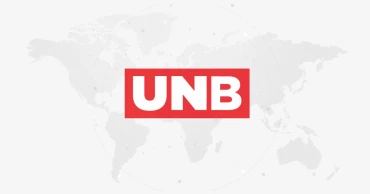World Trade Statistical Review
How Bangladesh can boost apparel exports
Bangladesh has so far failed to cash in on the huge market potential for ready-made garments in both developed and emerging economies, if government figures are to be believed.
Last year's Covid-induced lockdown that saw many garment manufacturing units shutting shop further shattered the hopes of the sector. And now the threat of a second outbreak looms large over the industry.
According to the Export Promotion Bureau, Bangladesh’s readymade garment exports stood at Tk 21033.01 million till February this fiscal, 3.73 percent lower than the corresponding period in the previous financial year. Last fiscal's export figure was Tk 21,847.53 million.
However, experts attribute this setback to the sector overall not being competitive enough, and say that if issues like the lack of technological advancement and skilled manpower can be addressed, the readymade garment industry in Bangladesh may witness a rapid revival.
Expanding the product portfolio as per consumer preference is also needed for the sector's turnaround, they say. All these issues if addressed can increase Bangladesh's market share in readymade garment exports up to 10 percent from the existing 6.8 percent by 2025.
Bangladesh’s five basic items are shirts, trousers, jackets, T-shirts and sweaters -- together they make up more than 70 percent of the total readymade garment exports. But these products go to only five countries -- Germany, the US, the UK, France and Spain.
So, market extension is very significant for Bangladesh, say experts, suggesting that like China, Bangladesh also has to go in non-cotton production to increase its market share as there is a huge potential for these items across the world.
Also read: Coronavirus: RMG sector to get loan on 2pc interest
According to the World Trade Statistical Review (WTSR)- 2020, Bangladesh’s global market share in apparel exports stood at 6.8 percent in 2019, which was 6.4 percent in 2018.
“The total market size of the global apparel industry was $411 billion in 2019. Vietnam was the closest competitor of Bangladesh at 6.20 percent share. Besides, India’s market share was 3.5 percent in 2019 while Turkey’s stood at 3.2 percent."
WTSR-2019 data also showed that of the global apparel export market of $421 billion, Bangladesh grasped $32 billion in 2018, which was $29 in 2017. In 2019, China was the top global garment exporter with a 30.8 percent share, followed by the EU and Bangladesh.
Research Director of the Centre for Policy Dialogue (CPD) Khondaker Golam Moazzem told UNB that Bangladesh should produce more diversified products to increase its apparel industry market share across the globe.
“Actually, we export only several basic cotton items. But there is a huge market for non-cotton products across the world. So, Bangladesh has to go in non-cotton products to increase its global market share,” he said.
The economist also called upon the government to provide more "technological" funds to help entrepreneurs improve production of garments to suit the needs of the world.
“We should bring in foreign investors (those who are capable of producing non-cotton products) in our economic zones. The market share won’t increase without value added products. So our capacity needs to be increased alongside infrastructure development."
Underscoring the need for new market extension, the Managing Director of the Giant Group Faruque Hassan said, “If we are elected to the Bangladesh Garment Manufacturers and Exporters Association (BGMEA), we will address the issues plaguing the industry."
Also read: Coronavirus: Experts call for paying attention to apparel sector
"If properly addressed, Bangladesh can increase its market share in readymade garment exports to 10 percent in four years," said the panel leader of Sammilita Parishad.
According to Faruque, Bangladesh's export earnings from the clothing sector decreased to $27 billion in the 2019-20 financial year from $34 billion in the previous fiscal. "We will prioritise diversification and innovation production by adopting the latest technology."
“If our panel gets a chance, we will also work closely with the Bangladesh government and the European Union to retain duty-free market access in the region upto 2031. It’s possible through apparel diplomacy,” he added.
The panel leader also said that they would form a special task force for an effective negotiation with the global trade partners and buyers to help the sector overcome the existing challenges.
“The dominance of cotton products in the fashion industry declined sharply in the last three decades. Besides, nearly 70 percent of the market is captured by man-made fibre. We have only 25 percent of products made of cotton. So, there is a huge opportunity," he said.
"However, we will appoint lobbyists in the US to get duty-free market access for Bangladeshi apparel products if elected. We will also reform customs policy and automate import and export data activities."
Meanwhile, the incumbent BGMEA President Dr Rubana Hug said she would also help strengthen the Bangladesh Garment Manufacturers and Exporters Association (BGMEA).
“If our panel is elected again, we will finish our unfinished work. We have been able to change many things in the sector in the last two years. We will now use our experience to overcome the challenges of the sector," she added.
As Shadhinata Parishad joined with Sammilita Parishad, two panels are contesting this year's BGMEA election. Chairman of Hannan Group ABM Shamsuddin is leading the Forum panel.
4 years ago

